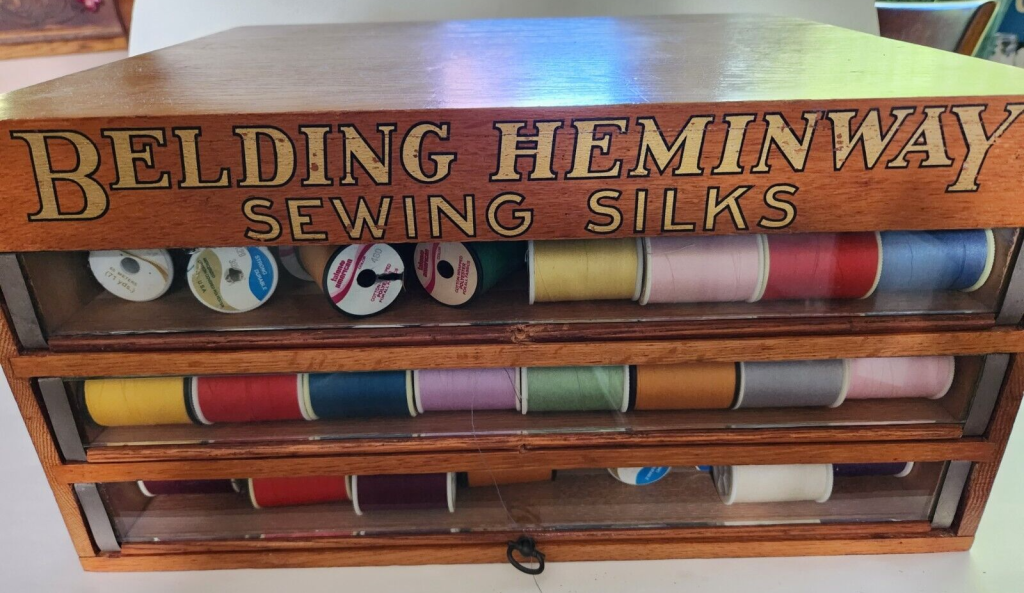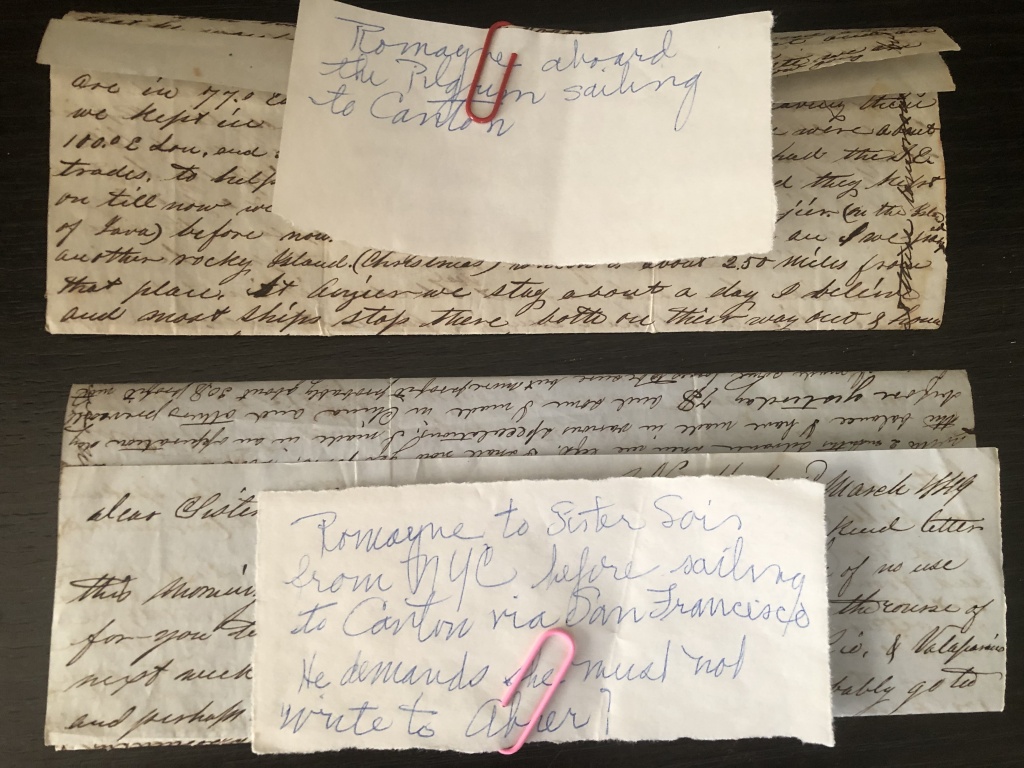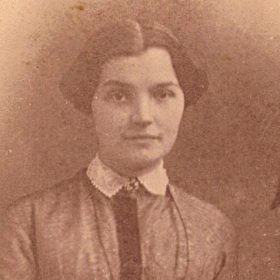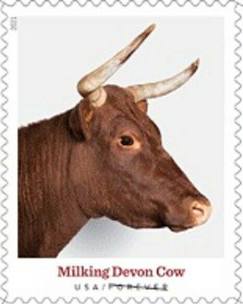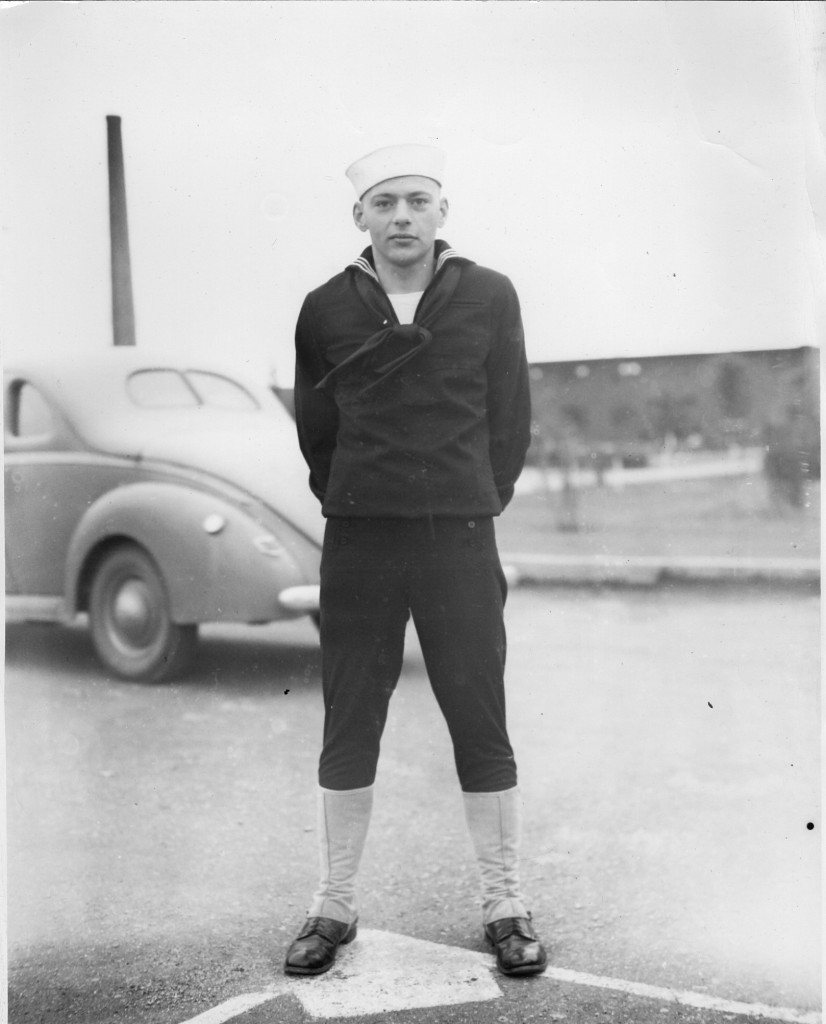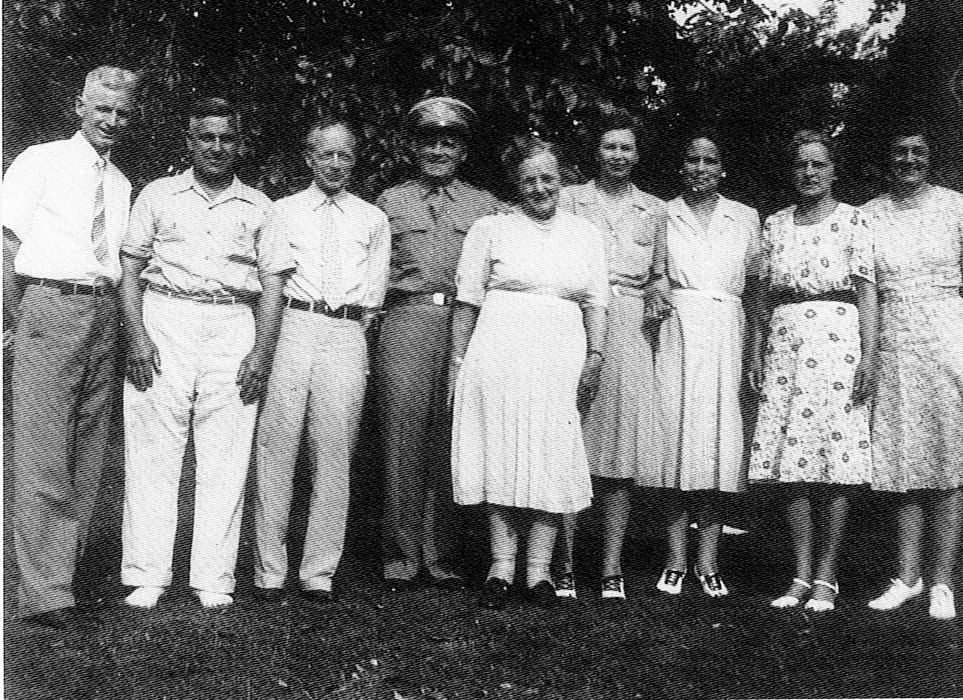Connecticut’s rich history of innovation and manufacturing — from pocketknives to typewriters, and guns to hats — pulled many workers off the family farm and into the busy mills and factories in the 19th century. Companies relied on a local work force desperate to put food on the tables at a time when subsistence farming could no longer support large families. In places where our family had roots, including Watertown, Waterbury and Bridgeport, workers clocked in for long hours of labor under mostly unregulated working conditions.
An enormous silk mill opened in Watertown in 1846. The M. Heminway and Sons Silk Company was the first to produce thread on spools, which could then be used on sewing machines. It employed hundreds of people, including Margaret Ann Black (1850-1922) the sister of my great-grandfather Elnathan.

Margaret is either the second or fourth from the left in the top row. The other is her older sister Jane.

Margaret’s father James had emigrated from Ireland and settled in Connecticut in the 1840’s. By the 1870’s, the Black family was farming in Watertown. While her brother Elnathan would raise Devon cattle on Birch Farm, Margaret got a job at a silk mill, according to the 1870 U.S. Census. The mill was likely M. Heminway and Sons. She was 20-years-old. Margaret may have been the first in her family to earn a regular paycheck.
The Watertown mill was in business under different names for around 100 years before moving south in the 1950s. Years after Margaret worked there, her niece Marjorie Black was employed as a stenographer, according to the 1910 census.
From the 1880’s to the 1920’s, thousands of people worked in the clock industry in Western Connecticut. Companies like Seth Thomas and the Waterbury Clock Company were famous for their fine clocks and watches. After Margaret’s marriage to William Foster (1859-1924), an immigrant from Scotland, the family settled in nearby Bethlehem. In the 1900 U.S. Census, William worked at Turner Clock Works, about which I can’t find any information. Margaret and William’s son Leon H. Foster also went to work in a clock factory.

Supporting a wife and two small children, Leon (1881-1956) was a “tinner in a watch shop” in the 1900 U.S. Census. He moved on, because his World War I Draft Registration Card says that he became a machinist at Chase Metal Works in Waterbury. The giant factory covered 211 acres in two towns and was nearly a mile long. The 1940 U.S. Census lists Leon’s 20-year-old son Arnold (1919-2016) as laborer in a clock factory


Other family members worked in carriage shops, pin factories and as machinists. My great-grandmother Hattie Woodruff Black‘s older half brother John “Frederick” Woodruff Jr. (1879-1910) was a “Pin Maker” in the 1900 U.S. Census. He grew up on his family’s farm in Watertown, where the Oakville Pin Company employed tens of thousands of workers until its closure in the early 1970s. A trolley even brought in workers from Waterbury.

About 40 miles southeast of Watertown was the industrial city of Bridgeport, with its harbor on the Long Island Sound. One of its booming industries in the mid-19th century was carriage manufacturing. The carriage factories drew workers from nearby rural towns like Redding, where my 3rd great grandfather Bradley Burr, was a postmaster, stage coach driver, shoemaker and innkeeper. Two of his sons, William “Henry” Burr (1831-1907) and George Burr (1829-1915) moved to Bridgeport to build carriages. They lived with their sister Julia Burr Gould (1821-1907), my 2nd great grandmother, and her husband Daniel Banks Gould (1818-1858). In the 1850 U.S. Census,William’s occupation is listed as “carriage and axle” and George’s as “carriage painter.” They were aged 19 and 21.
Daniel B. Gould grew up on a farm in Easton, but his brother Eber Jr. took over the family farm. Daniel came to Bridgeport to seek his fortune. He may have owned the factory that his brothers-in-law worked in, as he is listed as a “Carriage and Axle Manufacturer” in the 1850 U.S. Census. He was also a banker and investor.
Both Henry and George went on to different occupations – farming for Henry and manufacturing in Brooklyn, New York, for George, but they got their starts in Connecticut’s booming industrial machine.
